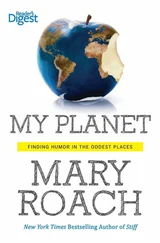I have arrived late for the safety briefing. I am signed on as the journalist for a Missouri University of Science and Technology team that is studying zero-and reduced-gravity welding. (“Reduced-gravity” refers to the situation on, say, the moon, where there is one-sixth as much gravity as on Earth, or Mars, where there’s one-third. It is NASA’s fondest dream to one day be welding on both.)
The safety lecturer is pointing to the wing of the C-9, now parked in the middle of the hangar where we are meeting. She has long, lank brown hair and wears a maternity blouse. “There are documented instances,” she is saying, “where grown men have been pulled into the engine intake from over six feet away.” [18] I mentioned this to an Oregon Air Guardsman I met a few weeks later. He replied that this had happened to a guy he knew. “I saw pictures,” he told me, leaning forward in his seat. “He was basically leaking out the back.” If you do a Google search on “Human FOD” (Human Foreign Object Damage), you will find footage of a young airman being pulled into the intake of an A-6 jet, causing sparks to shoot out the other side but not the airman himself. He appears in footage shot later that day, awake and chatting, his head bandaged but otherwise okay. A flight surgeon told me that the trick to surviving is to have your flash-light or socket wrench precede you into the maw. The object will be chewed to pieces, shutting down the engine before your head arrives on the scene. One site recommends buying neck cords for eyeglasses, lest they be pulled off one’s face. It goes on to say that jet intake suction can be strong enough to “pull the person’s eyeballs out,” but does not recommend a product for that.
I already know this because it’s in the Participant Handbook. The handbook uses the word ingested, as though the plane had played an active, sinister role in the event.
Mounted on the wall behind her is a long-handled tool reminiscent of the hooks whalers used to maneuver rafts of blubber alongside the ship. A sign identifies it as a BODY RESCUE HOOK. It is for rescuing someone who is being electrocuted in such a manner that the electricity has contracted his hand muscles, making him grip the very object that is killing him. If you try to pull him away by grabbing his arm, then your hand muscles too will contract, and now you both need rescuing. The pole is nonconductive, enabling the savvy rescuer to save a life without joining the growing conga line of electrocution victims. On this same wall, a hazard sign lists the many things that can trigger accidental discharge of the building’s firefighting foam. (I once saw a video of such an event. It was like Paul Bunyan drawing a bubble bath.) Unsettlingly, “welding” is on this list.
The dangers go on and on. Hearing protection must be worn on the tarmac. We are not allowed to wear flip-flops or sandals. “Horse-play” is forbidden.
In my press materials, there’s a photograph of the C-9 powering through the upward climb of the parabolic arch. It is flying at an absurd angle, the way a child moves a toy plane through the air. It seems odd to be talking about the dangers of fire-retarding suds and open-toed shoes rather than the dangers of riding a jet that repeatedly pulls out of a kamikaze dive into a climb so steep that the engines shudder.
This mix of extremes—workaday paranoia and aeronautic abandon—seems to typify the world of government-funded space travel. NASA’s buildings are plastered with warning signs for the most Tinkerbell dangers. SLIP, TRIP, AND FALL hazard signs are everywhere. Honestly: everywhere. Inside the stalls in the Johnson Space Center cafeteria bathroom, the toilet paper speaks to you from a dialogue bubble printed on the dispenser: “Ladies, don’t drop me on the floor. There, I could become a slip, trip, and fall hazard!” Wet-umbrella bag dispensers are installed at building entrances, courtesy of the Safety Action Team, to keep the floors dry. It’s as though NASA were populated by legions of hopeless pratfalling Mr. Bean types. When a corridor makes a 90-degree turn, a block-letter sign frets, BLIND CORNER: PROCEED WITH CAUTION.
Perhaps focusing on minor workplace dangers helps space agencies cope with the very major threats they deal with on every mission: explosions, crashes, fire, depressurization. Like war, space is a formidable bogeyman that takes its victims no matter how carefully you what-if the situation. You can’t control the weather or gravity, but you can control the shoes your visitor wears and the amount of water that drips onto the floor from her umbrella.
To NASA’s credit, a parabolic flight has never gone down. The C-9’s predecessor was the KC-135, one of which is displayed on a steel mount on the lawn outside, 10 feet up and seemingly headed for the commissary. It flew 58,000 parabolas without a “mishap.” [19] That would be a NASA Type A Mishap, as it would likely entail “injury or illness resulting in a fatality.” A “mishap” as you or I might define it (say, something involving a slippery floor), is not a mishap, not even a Type D Mishap. It is a Close Call. Nonetheless, there is paperwork: the JSC Form 1257 Close Call Report Form.
Then again, that’s the sort of thing the astronauts told themselves until the day Space Shuttle Challenger exploded 48,000 feet above the Atlantic.
It’s 6 P.M. The engineering students have gone to Fuddruckers without me. I pick up some takeout and settle in for an evening of NASA TV. Because I am staying at a hotel across the street from NASA—a hotel that proudly, wordily identifies itself to callers as “Extended Stay America Johnson Space Center”—NASA TV is the first channel that comes on. I adore NASA TV. It’s often just raw feed from cameras on the space station. You’ll tune in to a ten-minute shot of a solar array, immobile in the silence of space, speeding over Africa, the Atlantic, the Amazon. It calms me. I hear people at NASA say they think it’s boring, and there have been efforts to slick it up with graphics and hosted programs, but much of it, thankfully, is essentially undoctored.
Today the space station astronauts finished hooking up Japan’s new experimental laboratory module, Kibo. After the ribbon-cutting and press conference, there’s footage of them entering the module for the first time. They’re like bulls let into the ring, impelled to movement by the sudden expanse of open space. I’ve watched a lot of NASA TV, and you rarely see this sort of abandon. You’ll see a guy hunched over a circuit board, one toe hooked under a foot restraint, bobbing gently like a boat at anchor. Or you see the crew stacked in two neat rows, facing the camera and fielding press questions. If it weren’t for the floating microphone cord or someone’s gold necklace levitating in front of her chin, you could easily forget they’re weightless.
My noodles have gone cold because I can’t look away from the TV. One astronaut is spinning horizontally, as though NASA TV had hired one of those guys who do special effects for martial arts movies. Karen Nyberg is banking like a cue ball: wall, ceiling, wall, floor. No one wears shoes, because no one’s soles need to be on the floor, and even if they did, the dust and dirt don’t settle there. The astronaut from Japan, Akihiko Hoshide, is crouched at the opening to the module, waiting for a clear path across the length of it. He pushes off and flies across empty air, arms in front like a superhero. I have done this in dreams. I’m in an enormous old building with 50-foot ceilings and elaborate moldings. I push off from the molding and glide across the room, then bank off the opposing wall and do it again. Whatever the dangers of parabolic flights may be, they do not dampen the anticipated joy of escaping gravity. I go to sleep feeling like a six-year-old on Christmas Eve.
Читать дальше












